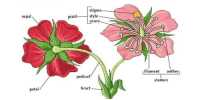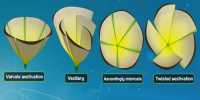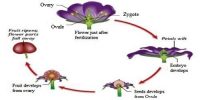The leaf is a lateral, generally flattened structure borne on the stem. It develops at the node and bears a bud in its axil. The axillary bud later develops into a branch. Leaves originate from shoot apical meristems and are arranged in an acropetal order. They are the most important vegetative organs for photosynthesis.
Atypical leaf consists of three main parts: leafbase, petiole and lamina (Figure: a).

Fig: parts of leaf
The leaf is attached to the stem by the leaf base and may bear two lateral small leaves like structures called stipules. In monocotyledons, the leaf base expands into a sheath covering the stein partially or wholly. In some leguminous plants the leatbase may become swollen, which is called the pulvinus. The petiole help hold the blade to light. Long thin flexible petioles allow leaf blades to flutter in wind, thereby cooling the leaf and bringing fresh air to leaf surface. The lamina or the leaf blade is the green expanded part of the leaf with veins and veinlets.
There is, usually, a middle prominent vein, which is known as the midrib. Veins provide rigidity to the leaf blade and act as channels of transport for water, minerals and food materials. The shape, margin, apex, surface and extent of incision of lamina varies in different leaves.














